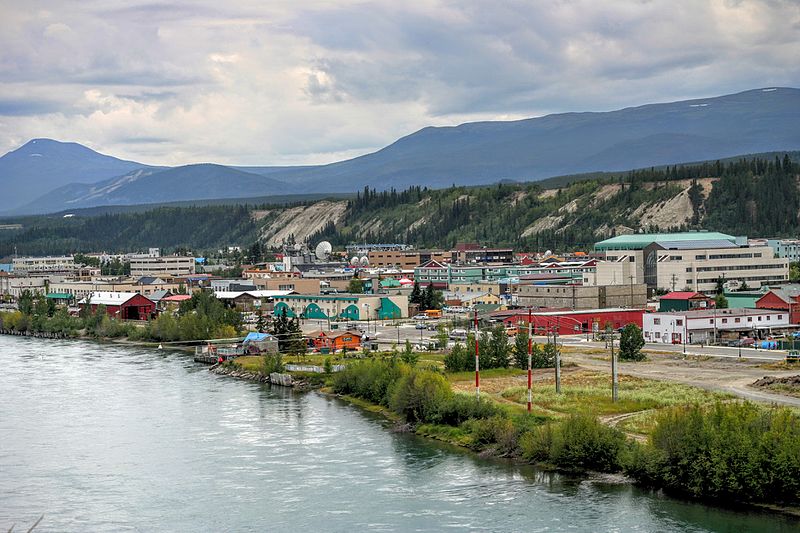The Yukon Government is forming a non-partisan commission to study electoral reform in the Yukon. In response to that welcome initiative, I am writing a series of articles examining an array of existing electoral systems worldwide, as well as some unique, new systems as yet untried.
Mixed Member Proportional Representation, (MMP) is a hybrid of First Past the Post, (FPTP) and closed list Proportional Representation, (PR). MMP provides both regional representation and proportionality in the composition of governments. This system is used in New Zealand, Germany, Lesotho and Bolivia.
Voters in countries using MMP cast two ballots during elections, one for their constituency representative and one for a political party. The constituency representatives are determined using FPTP. The number of legislature seats that each party wins is determined by the percentage of PR votes they acquire. PR representatives are chosen from closed party lists created by each political party.
In 1993, when New Zealand still used the FPTP, there were 99 constituency seats in their House of Commons. When they switched to MMP, they were able to keep the size of their House of Commons within reason by combining existing constituencies. Today there are 64 constituency seats, seven Maori seats and approximately 49 proportional seats for a total of 120 seats in their House of Commons.
How would combining constituencies work in the Yukon? It would be fine for Whitehorse where there isn’t significant difference between any two constituencies. But is this a good option for the communities? Old Crow and the Klondike are quite different. And how would the regional MLA manage to visit his or her constituents in a geographically large constituency?
Maintaining proportionality creates an interesting dilemma. It is not a problem if a party wins a higher proportional percentage than they do constituency seats. They simply receive top up seats to reflect their proportional support. But, if a party wins more constituency seats than they win proportional votes, extra seats are created and given, proportionately, to the other parties so that the percentage of seats occupied by each party reflects the true outcome of the proportional vote. These extra seats are called over-hang seats.
For example, Party B wins five constituency seats but only 20 percent of the proportional vote. Our legislature has 20 seats. (20% of 20 = 4 seats. 20% of 23 = 4.6 seats which rounds out to 5 seats.) Therefore, the legislature would have to be increased by at least three seats that would then be distributed proportionately amongst the other parties. This situation is further complicated by rounding up fractions.
How likely is this situation? Consider how popular NDP candidates are in spite of Yukoners’ current unwillingness to elect an NDP government. Many people would vote across party lines if given the opportunity.
When New Zealand has even six over-hang seats, it does not significantly increase the size of government. The problem is due to the Yukon’s tiny population. If we permanently raised the size of our legislature to 22 seats, 12 constituency seats and 10 PR seats, the chances of this over-hang seat situation could be reduced. And we would be able to provide better representation for the more remote communities.
Another problem with MMP is that FPTP is used to tally constituency votes, leading to unfair results.
The most common criticism of MMP is that it necessitates coalition governments. However, many political experts consider this to be beneficial.
Here is the list of criteria for an effective and fair electoral system gleaned from exchanges with Yukoners.
- Make all, or most, votes to count.
- Maintain regional representation.
- Do not significantly increase the number of seats in parliament or legislature.
- Do not significantly increase the costs of elections.
- Keep extremists out.
- Have an electoral system that people can understand when they go to the polls.
- Ensure resistance to undo influence by power groups.
Here is how MMP would work in the Yukon.
- MMP would give us close to perfect representation in terms of our political preferences. It would increase the chances of having Green MLAs. It would likely result in coalition governments that must work to achieve consensus. Election outcomes for constituencies would be skewed because of FPTP. A candidate with only 35% support could easily win. If we used rated ballots instead, this problem would be avoided.
- While regional representation would be fine for Whitehorse, communities elsewhere would find their regional representation thin.
- The number of seats in the legislature could increase in the event of over-hang seats.
- Electoral costs may increase slightly due to printing two ballots. Legislative costs have the possibility of increasing significantly due to over-hang salaries.
- It’s not clear how much difference MMP would be in keeping extremists out. New Zealand and Germany are stable democracies with good human rights records. Lesotho and Bolivia are not.
- Two ballots aren’t a stretch for most people. But when it comes to tallying votes, calculating percentages and potential over-hang seats, there are challenges. I envision bar-room arguments about arithmetic during elections.
- Powerful unions, religious groups and corporations would have to spread their influence dollars over a larger area in any PR system.
Mixed Member Proportional is an interesting option for Canada, if not the Yukon. Could MMP be adjusted to reflect our circumstances? Could we find a way to ensure proportionality without over-hang seats? Perhaps. Fair Vote Canada has already designed a tailored version of MMP for Canada.
Image: Wikimedia Commons
Like this article? Please chip in to keep stories like these coming.





